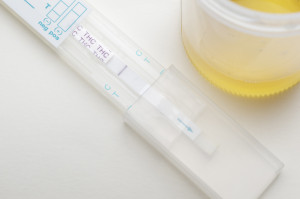 Next week, Ohioans will vote on Issue 3: a state constitutional amendment to legalize marijuana for medicinal and personal use*. If marijuana use is legalized in Ohio, more drivers will face charges of operating a vehicle under the influence of marijuana. Ohio’s OVI-marijuana laws raise many questions: How long does a marijuana high last? Does marijuana impair driving ability? Do blood and urine test results correlate with impaired driving ability? Are Ohio’s OVI-marijuana laws Constitutional? This article addresses the first question by discussing the duration of marijuana effects.
Next week, Ohioans will vote on Issue 3: a state constitutional amendment to legalize marijuana for medicinal and personal use*. If marijuana use is legalized in Ohio, more drivers will face charges of operating a vehicle under the influence of marijuana. Ohio’s OVI-marijuana laws raise many questions: How long does a marijuana high last? Does marijuana impair driving ability? Do blood and urine test results correlate with impaired driving ability? Are Ohio’s OVI-marijuana laws Constitutional? This article addresses the first question by discussing the duration of marijuana effects.
The psychoactive ingredient in marijuana is THC (tetrahydrocannabinol). THC is what makes a person ‘high’. Whether smoked or eaten, when THC enters the body, it is broken down (metabolized) quickly, either in lungs or stomach. When this metabolism occurs, metabolites are produced. A metabolite is any substance produced during metabolism: what remains after a drug is ‘broken down’.
As marijuana is metabolized when it enters the body, it is laughable that Ohio law prohibits operating a vehicle with a prohibited concentration of “marijuana”. There will never be Ohio OVI cases with blood or urine tests showing a concentration of “marijuana” because blood and urine tests do not identify or measure “marijuana”. Instead, they identify and measure THC metabolites.
Two THC metabolites are measured in the context of DUI/OVI cases. One metabolite of THC is 11-OH-THC, known as Hydroxy THC. Another metabolite of THC is THC-COOH, known as Carboxy THC. THC metabolism occurs sequentially: from THC to Hyrdoxy THC to Carboxy THC. Hydroxy THC is commonly called the ‘active’ metabolite, and Carboxy THC is commonly called the ‘inactive’ metabolite. The following analogy explains why.
In terms of being psychoactive, THC and its metabolites can be compared to a campfire. THC is like the burning fire: just like the campfire produces heat, THC produces mind-altering effects. Hydroxy THC is like the lightly glowing embers at the end of the campfire’s existence: just as those embers give off a little heat, Hydroxy THC gives a little high. Carboxy THC is like the ashes of a campfire: all we can say from the presence of Carboxy THC is ‘there was a fire here in the past’.
There is a distinction between the duration of a marijuana high and the length of time THC metabolites are detectable. There are varying conclusions about the average length of a marijuana high. The National Highway Traffic Safety Administration (NHTSA) marijuana fact sheet reports a range of two hours and five hours.
Although the effects of marijuana last only two to five hours, THC and its metabolites are detectable for much longer. There are varying conclusions on detectability in scientific literature, so what is reported here is subject to debate. In blood, Hydroxy THC is detectable for up to eight hours, and Carboxy THC is detectable for up to 12 hours. In urine, Carboxy THC is detectable for up to five weeks.
The distinction between duration of detectability and duration of effects is problematic. Even if marijuana impairs driving ability, it’s only for two to five hours. Tests, however, will reveal THC metabolites in blood for up to 12 hours and in urine for up to five weeks. That means a person could be charged with OVI-marijuana hours, days, or weeks after it stops affecting them. This provokes the question posed at the beginning of this article regarding whether Ohio’s OVI-marijuana laws are Constitutional. That issue will be addressed in a subsequent article in this blog.
*Although the wisdom of passing Issue 3 is not the subject of this article, I do have an opinion on the matter. Regardless of whether marijuana legalization is a good public policy, it should not be accomplished by means of a Constitutional amendment. The purpose of the Ohio Constitution is to provide a framework for the state government and should not be modified to encompass narrow public policies like marijuana legalization. Those policies should be addressed in legislation, not the Constitution.
 Columbus OVI/DUI Attorney Blog
Columbus OVI/DUI Attorney Blog

